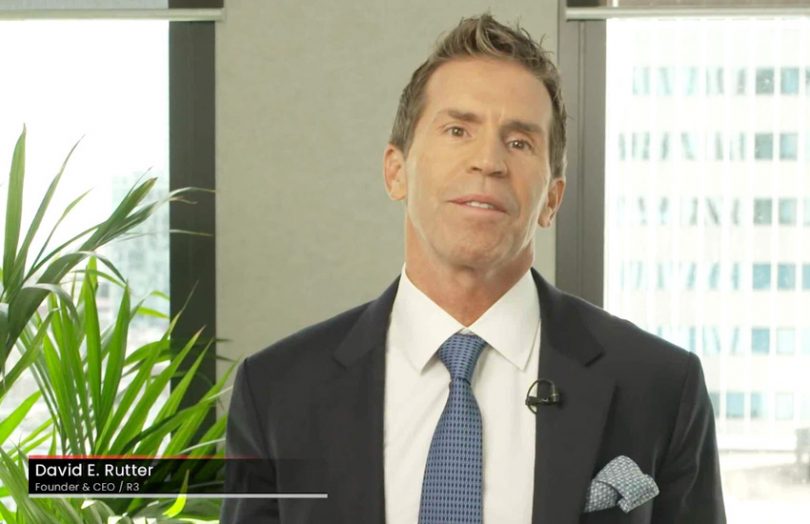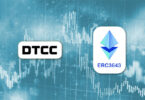It’s plain to see on the CordaCon agenda for this coming Thursday that IBM is an event sponsor and partner of enterprise blockchain firm R3. The same day there’s an R3 strategic partnership announcement by R3’s CEO, which is most likely about IBM.
So here’s a little speculation about the nature of the partnership [Update: this article was written a couple of days before the formal announcement, and the speculation was only partially correct]. My first candidate would be hardware encryption, an area where IBM has expertise. Last year R3 started a new technical push beyond blockchain focusing on enabling confidential computing with its Conclave project. The aim is for companies to collaborate in data sharing without revealing information to competitors. That’s useful for fraud detection, market insights and more. R3’s CTO will be talking about confidential computing at the conference this morning.
Confidential computing leverages hardware enclaves, which ringfence the data from prying eyes. Three of the key hardware providers are Intel, IBM and AMD. R3 already has a long standing partnership with Intel for its SGX offering. But IBM has a chip as well.
And IBM’s approach is different from Intel’s in that it can protect an entire virtual machine, not just an application. Perhaps that could be useful for Corda notary nodes.
Plus, IBM has never limited itself to Hyperledger Fabric for blockchain. It’s on the governing council of public DLT Hedera, has a solution with Stellar and is involved with Sovrin for identity. Would it risk losing a client if that customer wanted to use R3’s Corda? The confidential computing collaboration is more likely, but I wouldn’t rule out an enterprise blockchain partnership. And R3’s CTO Richard Brown spent 15 years at IBM.
R3 has shades of Apple with announcements
Yesterday R3 unveiled its new managed service offering. It didn’t call it a Blockchain as a Service (BaaS), but that’s essentially what it is. The solution offers dedicated nodes on public clouds with 24/7 support.
There’s no question that across all enterprise blockchains, managing the infrastructure is seen as a hurdle. Hence from R3’s perspective, removing obstacles is important.
But another consideration is the R3 ecosystem. It begs the question about where that leaves startups such as Kaleido, Chainstack and others that have spent the time to develop Corda BaaS offerings.
Apple has developed a reputation for launching apps that compete and crush apps produced by its developer ecosystem. The question is whether R3 will exhibit similar behavior.
Another announcement was that R3 acquired an electronic bill of lading (eBL) platform, Singapore’s E-Title Authority. Bills of lading are core documents in trade that give the title to shipments. Something that’s begging to be tokenized. Together with warehouse receipts, these two documents have been the subject of numerous frauds, with companies using them more than once to raise finance. This year alone, banks have lost many billions. Again R3 saw a need and filled it.
However, even if it’s an important cog for other broader applications, this is an application, as opposed to the blockchain protocol. A sign that R3 will be moving up the technology stack.
Earlier this year, it was announced that R3’s CEO was creating LedgerEdge, a new blockchain based company focusing on the bond market. That’s despite numerous R3 clients targeting the same sector, including its largest outside investor SBI which is collaborating with Nomura on a bond issuance platform. Doubtless, LedgerEdge will say its goals are different. But it’s still an application and R3 is privy to the plans of others.
Keep it simple and have patience
Meanwhile, the tone of CordaCon is a little different compared to last year. At CordaCon 2019, several major solutions had just gone live or were about to. Expectations were sky high. These include the likes of trade finance platform Marco Polo, collateral solution HQLAX and insurance network B3i. They’re all moving forward, but perhaps not as quickly as everyone hoped.
We recently asked Marco Polo developer TradeIX about how many banks were in production, given the platform has been live more than a year, and they declined to provide figures.
In his opening talk, R3 CEO David Rutter mentioned these solutions in passing. Instead he highlighted successes at the Italian Spunta project with more than a hundred banks live for reconciliations and the Thai procure to pay platform with 6,400 suppliers.
But make no mistake, R3 is growing. It set up a Dublin office to double its engineering team. When R3 settled its lawsuit with Ripple, we noted that the settlement’s size would be reflected R3’s activities. The settlement range was estimated as between $100 million and a billion. Based on R3’s growth, we don’t believe it was at the bottom end.
But in terms of getting traction with solutions, it’s going to take time. A panel discussion about distributed ledger technology for the bond market highlighted the need to make small steps. A sentiment echoed by Tim Grant, the head of SIX’s digital asset exchange SDX. “This is a long journey,” said Grant. “This is not something that happens in a year or a few quarters. This is a five, ten, 15, 20-year journey that we’re beginning here.”






